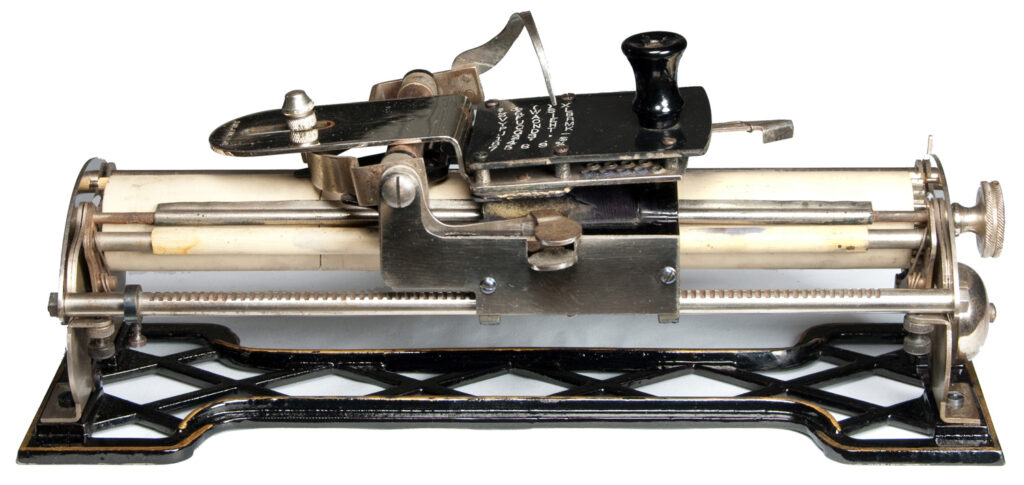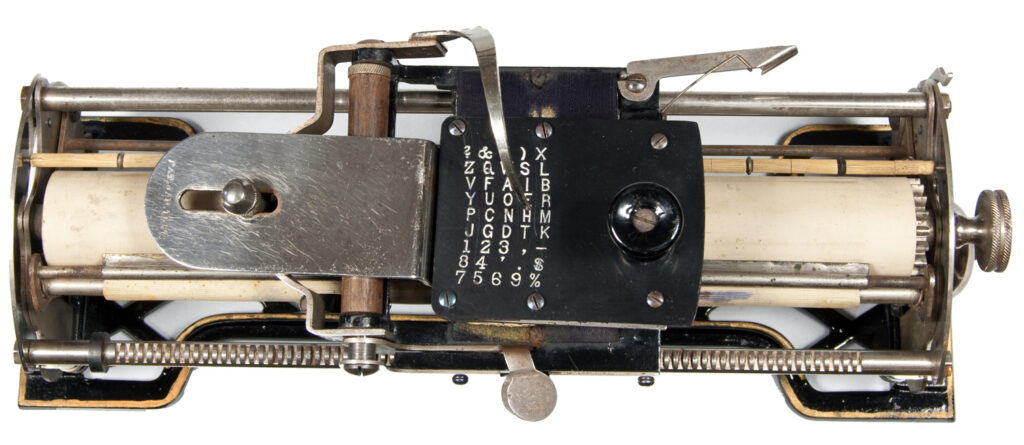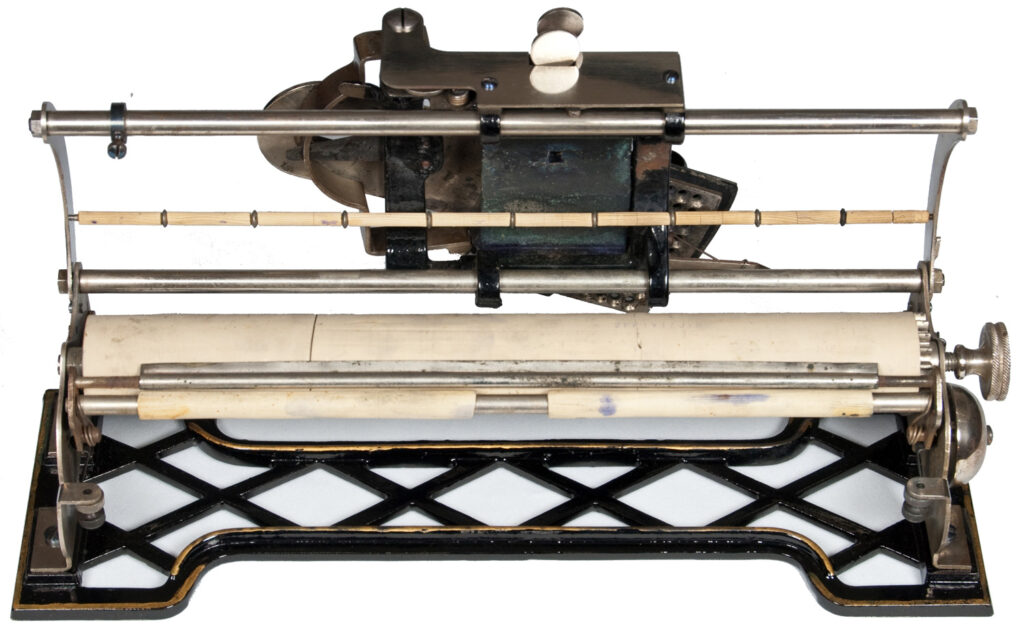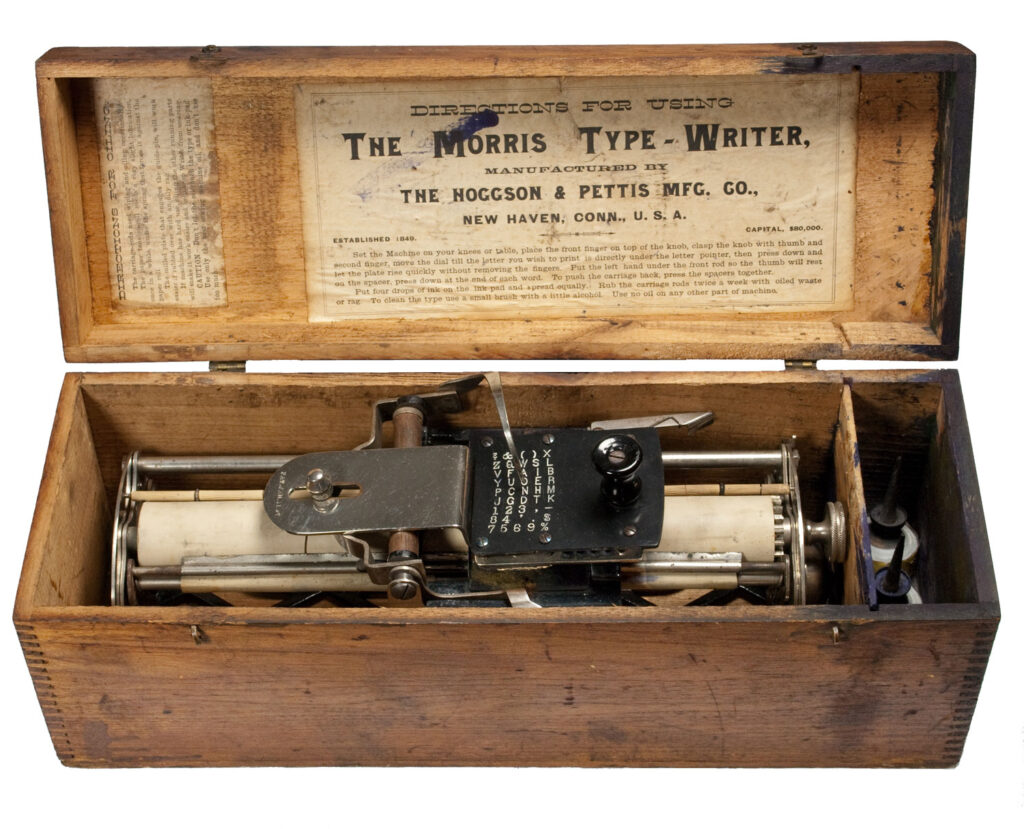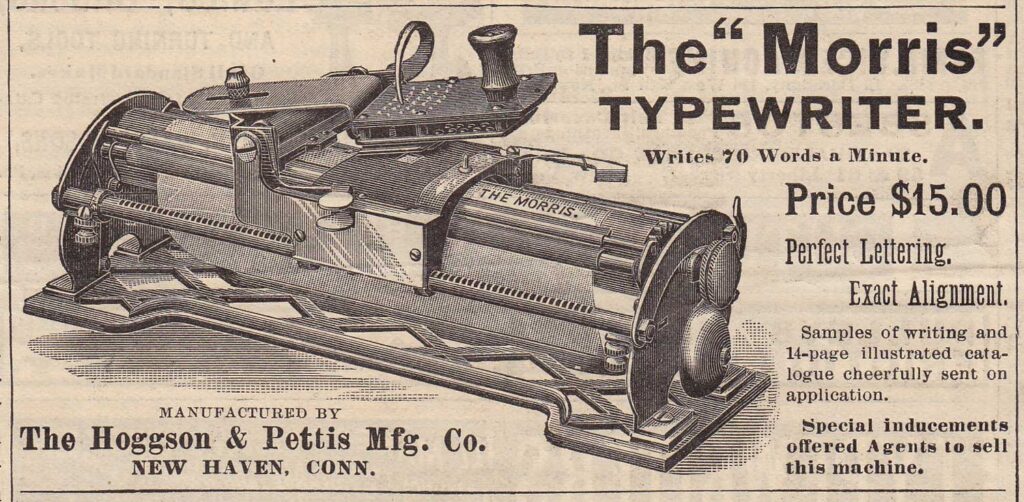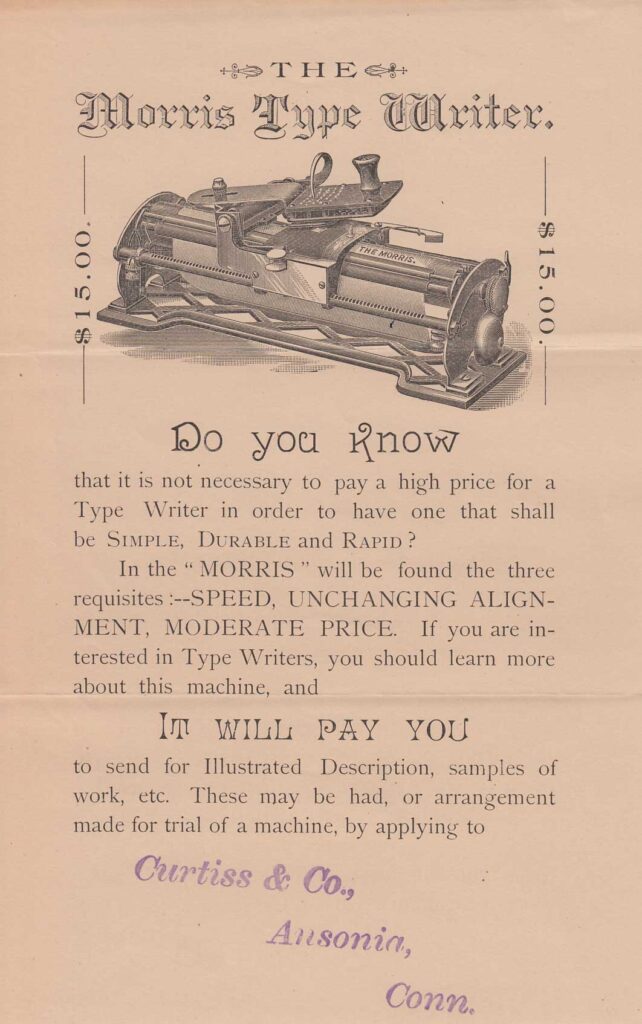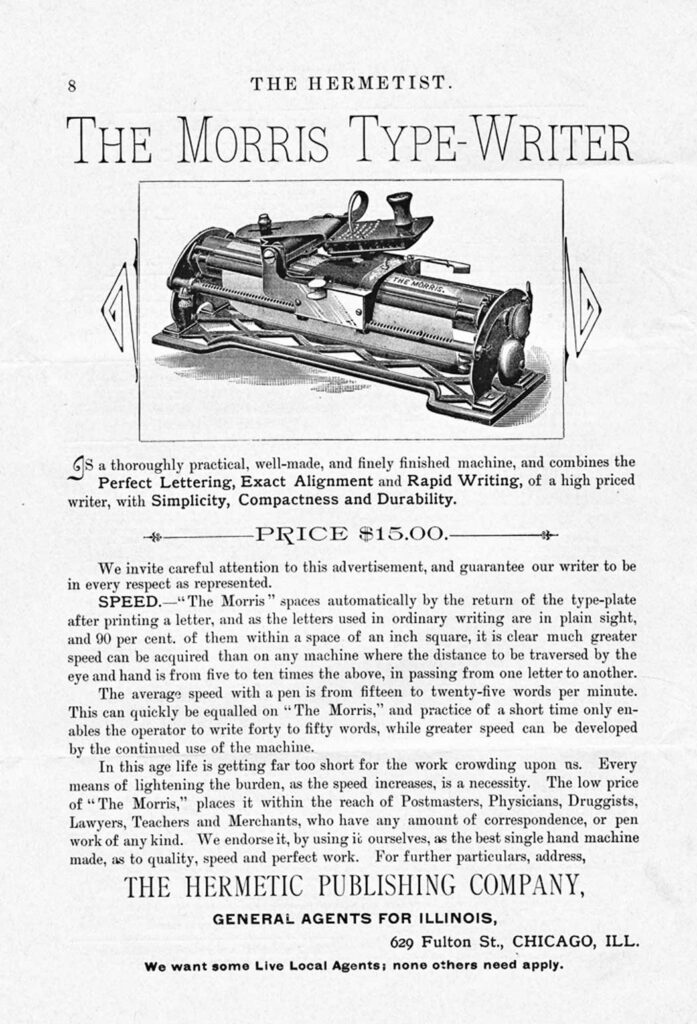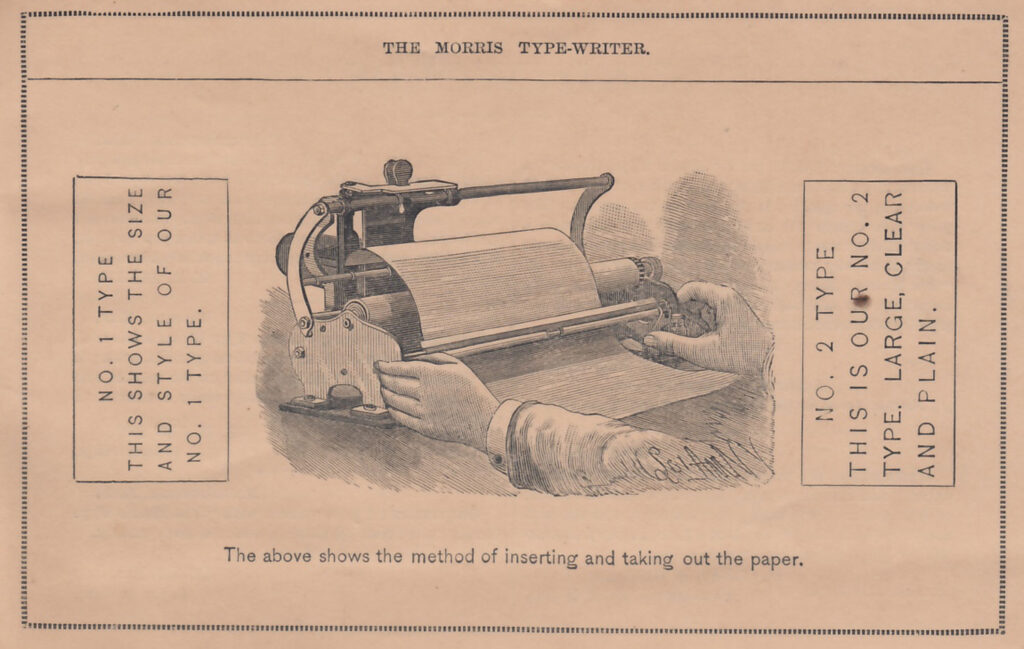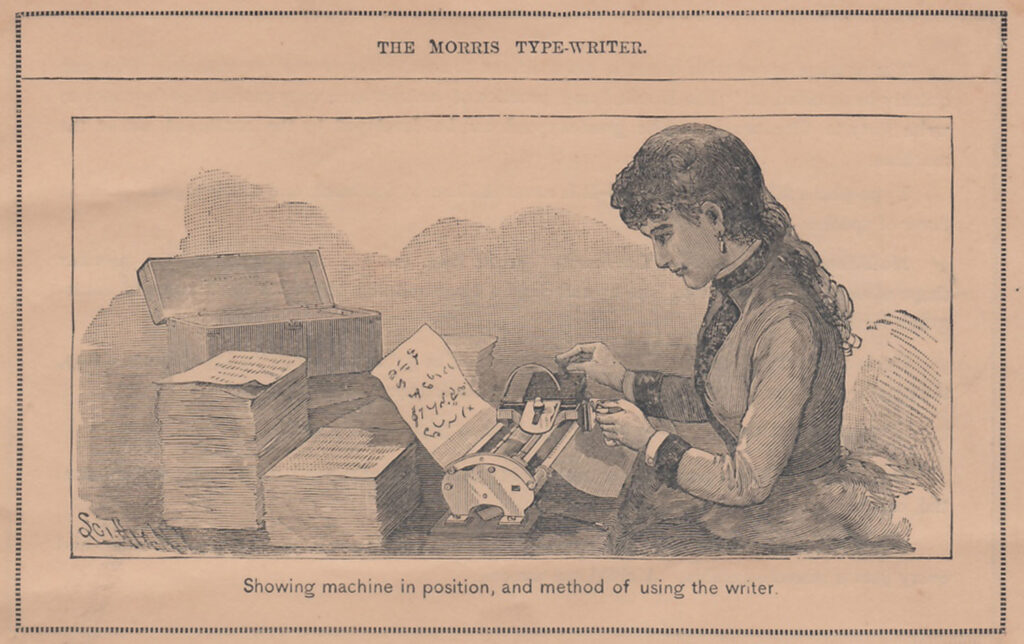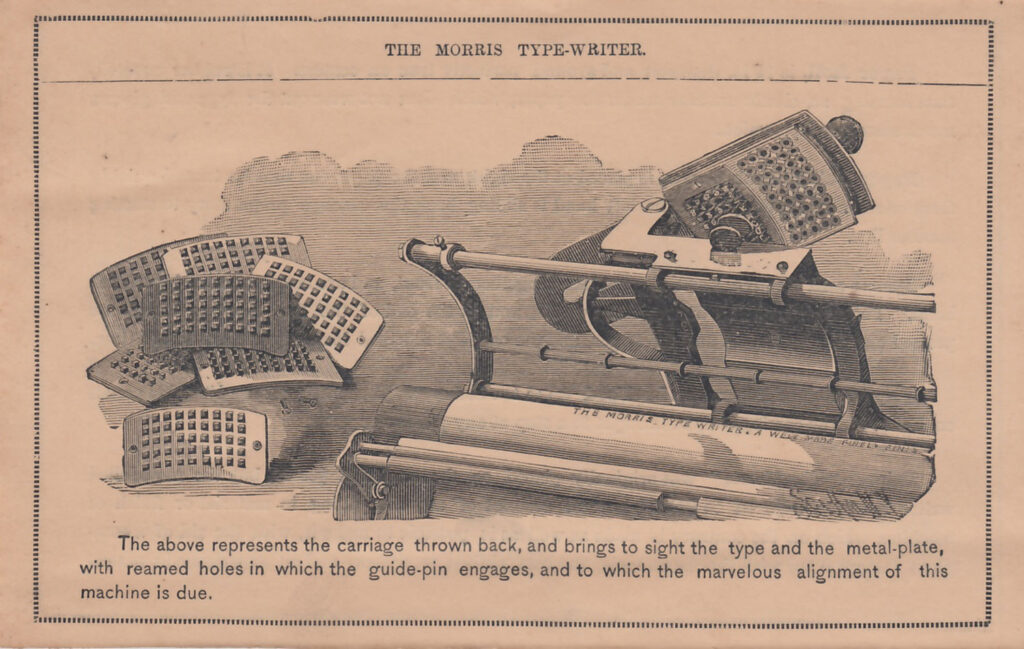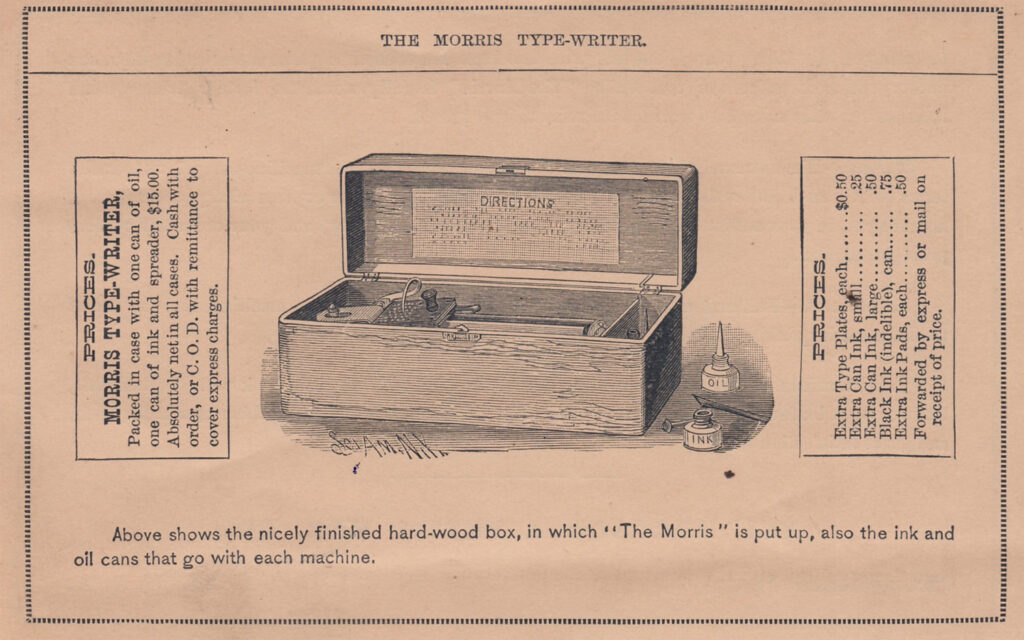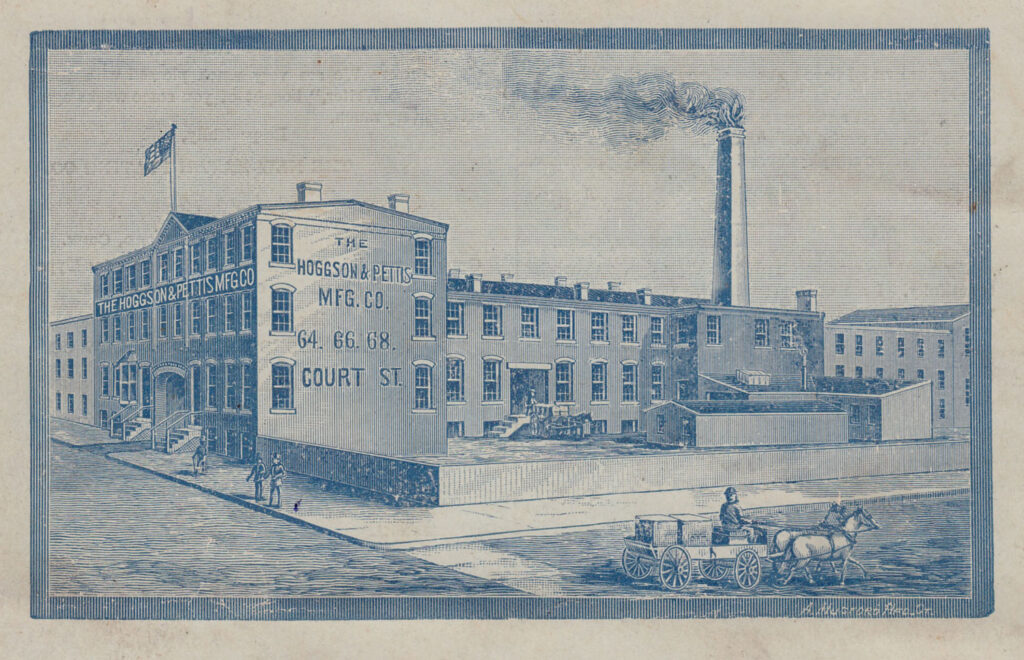Charles Spiro: Reaching Back in Time’ – An illustrated article
The Morris typewriter was invented by Robert Morris of Kansas City. His first version, built on a wooden base, appeared in 1885 and achieved modest success, with a few hundred units sold. In 1886, Mr. Morris sold the manufacturing rights to Hoggson & Pettis Manufacturing Company of New Haven, Connecticut. The company made several improvements to the design, including the addition of a beautiful metal trellised base, which can be seen on this Morris.
Hoggson & Pettis were well-established machinists of the day, producing, among other things, lathe chucks, cutting dies, leather tools, and a check protector. Who better to take on the manufacture of the Morris typewriter? Hoggson started the business in 1849, and it became a company in 1878 when Pettis joined as a partner. At its height, the firm employed one hundred skilled workmen in a ‘modern’ factory spanning sixteen thousand square feet—“splendidly equipped with the latest improved machinery and every facility.” They exported to “every civilized country.”
The Morris has a most unusual design, featuring a white rubber platen and a carriage that traverses across the top of the typewriter on two metal rods. Within the carriage is a rubber index plate of characters, which is moved into position using a black knob. The typist then depresses the knob to press the rubber character onto the paper.
An advertisement for the Morris claims it can achieve 70 words per minute. However, after typing on this machine, I would be surprised if 15 words could be reached. One of the main issues is the strength of the leaf spring that supports the index assembly which requires a very firm push to print. Additionally, speed is hampered by the close placement of the metal index pointer to the index plate. As one attempts to work quickly, the pointer would scratch and rub against the plate’s surface.
The last five images below are from the rare Morris manual and include a wonderful illustration of the Hoggson & Pettis factory.
“The low price of “The Morris”, places it within reach of Postmasters, Physicians, Druggists, Lawyers, Teachers and Merchants, who have any amount of correspondence, or pen work of any kind.”

